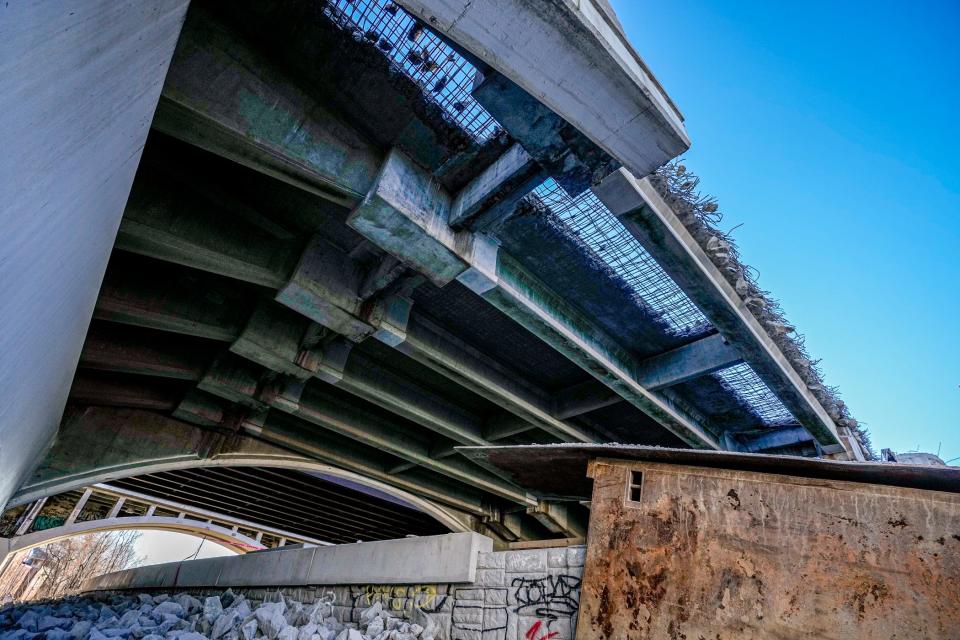Report on Washington Bridge casts doubt on long-term safety of repairing the westbound span
An engineering firm studying the damaged westbound side of the Washington Bridge has found that repairs to the structure "have limited viability" and a full replacement of the span may be the only way to make it safe in the long term.
The draft report obtained by The Journal was dated Wednesday and written by Michael Murdock, vice president and principal structural engineer at VN Engineers, one of the firms analyzing the beleaguered bridge. It identifies nearly a dozen major problems with the structure and says the bridge's load-carrying capacity is much lower than it is supposed to be.
The report concludes that the options to repair and strengthen the bridge "are limited, complex and do not completely mitigate the identified risks with the structure."
Even if a new anchoring system is installed to replace the broken tie rods that triggered the bridge's closure, the risk of "progressive collapse ... increases with time as deterioration of the system continues."
The Department of Transportation and Gov. Dan McKee's administration are awaiting a series of studies of the bridge before deciding what to do with it. The DOT confirmed it received the report from VN late Thursday but declined to comment on its implications.
"Governor McKee and [DOT Director Peter] Alviti have repeatedly stated that no decision concerning the Washington Bridge would be made until all final reports were received and evaluated," McKee spokeswoman Olivia Darocha wrote in an email.
The VN engineers do not hypothesize how the bridge became weakened, but found problems well beyond the broken anchor rods that have been the focus of public debate and that risk the integrity of the structure from end to end.
Murdock advises the DOT to put temporary support beneath the span over Gano Street in Providence to protect against collapse and warns that falling "elements of the superstructure" could plunge into the Seekonk River and "damage the shared foundations" that also hold up the bridge's eastbound span. Since late last year, both directions of traffic on I-195 have been sharing the much newer eastbound bridge.
Although the report stops short of recommending the westbound span be torn down, it says that option has to be seriously considered.
Since inspections of the bridge uncovered serious problems with the steel-supported concrete that holds the span up, officials have sounded increasingly pessimistic the existing bridge can be saved. A full tear down and replacement, if that is the ultimate outcome, is expected to take years to complete.
"To fully eliminate these risks and improve inspection, maintenance and repair access would require the demolition and replacement of the superstructure, and potentially a full bridge replacement," the VN report says. "From an asset-management perspective, consideration should be given to these and other topics covered in this report in the decision-making process to determine the immediate next steps and long-term viability and sufficiency of the structure."

VN is one of the firms working in the consortium hired to repairing the bridge before structural problems were discovered in December, prompting the sudden closure of the bridge to prevent a catastrophe. The Department of Transportation said VN was hired to do a "modeling analysis" by VHB, the engineering firm that raised the alarm over the bridge's condition.
At a news conference Wednesday, Alviti told reporters the state was still awaiting results from the multiple studies of the bridge before deciding what to do about it. He said those results were expected in "late February or early March."
This article originally appeared on The Providence Journal: Washington Bridge report says full replacement needed to make span safe

